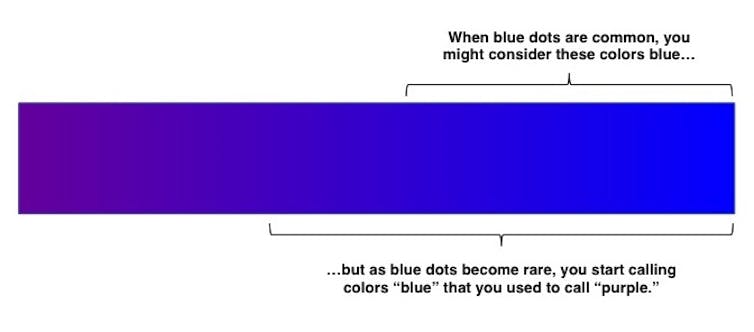When something becomes rare, we sometimes see it in more places than ever. It’s a quirk that can impair our judgment, but may be one we can control.
Why do many problems in life seem to stubbornly stick around, no matter how hard people work to fix them? It turns out that a quirk in the way human brains process information means that when something becomes rare, we sometimes see it in more places than ever.
Think of a “neighborhood watch” made up of volunteers who call the police when they see anything suspicious. Imagine a new volunteer who joins the watch to help lower crime in the area. When they first start volunteering, they raise the alarm when they see signs of serious crimes, like assault or burglary.
Let’s assume these efforts help and, over time, assaults and burglaries become rarer in the neighborhood. What would the volunteer do next? One possibility is that they would relax and stop calling the police. After all, the serious crimes they used to worry about are a thing of the past.
But you may share the intuition my research group had – that many volunteers in this situation wouldn’t relax just because crime went down. Instead, they’d start calling things “suspicious” that they would never have cared about back when crime was high, like jaywalking or loitering at night.
You can probably think of many similar situations in which problems never seem to go away, because people keep changing how they define them. This is sometimes called “concept creep,” or “moving the goalposts,” and it can be a frustrating experience. How can you know if you’re making progress solving a problem, when you keep redefining what it means to solve it? My colleagues and I wanted to understand when this kind of behavior happens, why, and if it can be prevented.
Looking for trouble
To study how concepts change when they become less common, we brought volunteers into our laboratory and gave them a simple task – to look at a series of computer-generated faces and decide which ones seem “threatening.” The faces had been carefully designed by researchers to range from very intimidating to very harmless.
As we showed people fewer and fewer threatening faces over time, we found that they expanded their definition of “threatening” to include a wider range of faces. In other words, when they ran out of threatening faces to find, they started calling faces threatening that they used to call harmless. Rather than being a consistent category, what people considered “threats” depended on how many threats they had seen lately.
This kind of inconsistency isn’t limited to judgments about threat. In another experiment, we asked people to make an even simpler decision: whether colored dots on a screen were blue or purple.
As the context changes, so do the boundaries of your categories.
David Levari, CC BY-ND
As blue dots became rare, people started calling slightly purple dots blue. They even did this when we told them blue dots were going to become rare, or offered them cash prizes to stay consistent over time. These results suggest that this behavior isn’t entirely under conscious control – otherwise, people would have been able to be consistent to earn a cash prize....MOREHT: Undark, from whom I swiped the headline.
